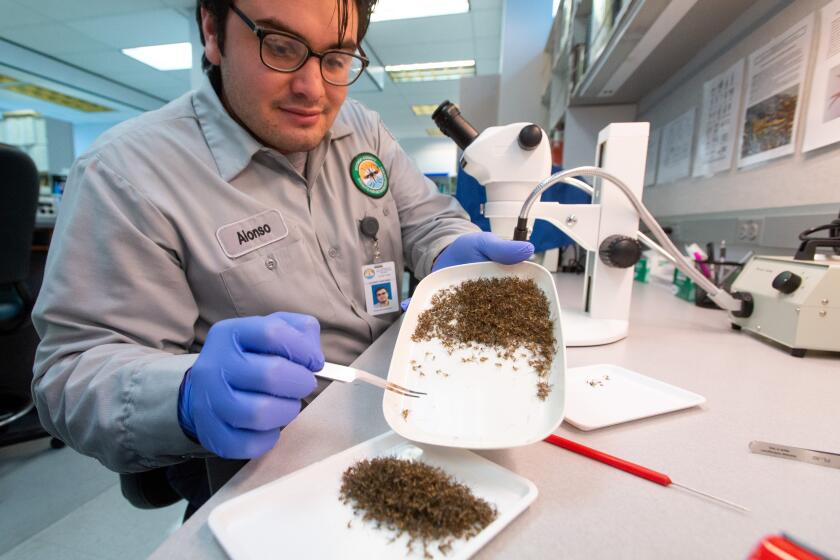U.S. Plan to Rid Kesterson Site of Selenium Disclosed
The U.S. Interior Department said Friday that it plans to evaporate water, burn plants and treat the soil to remove selenium from the Kesterson Reservoir by February, 1988.
The department’s cleanup plan, submitted to the state Water Resources Control Board, estimates that it will cost $2.9 million if the project goes well but could range up to $195 million if more expensive methods are required.
The state board last February ordered the federal government, which owns the 1,280-acre reservoir and surrounding 5,900-acre wildlife refuge in western Merced County, to close the reservoir.
Selenium, a natural soil mineral, and heavy metals have been carried by irrigation water runoff from Fresno County farms into the reservoir’s 12 evaporation ponds. The heavy selenium concentrations have been blamed for bird deaths and deformities at Kesterson.
Agreement Reached
The Interior Department announced in March that it would close Kesterson immediately but later reached an agreement with the Westlands Water District, which uses the irrigation water, to gradually end the irrigation by June 30, 1986.
“We are going to ensure that the goal of closure is met in a scientifically sound manner which assures that we do not create new problems as we solve the old ones,” said David Houston, director of the federal Bureau of Reclamation’s Sacramento regional office, in a statement accompanying the plan.
The proposal outlines how the federal government intends to remove contaminated water, plants and soil from the 12 evaporation ponds that are the terminus for the San Luis Drain. The drain was supposed to take used irrigation water out of the San Joaquin Valley and into the Sacramento-San Joaquin River Delta, but it was never completed because of heavy opposition.
Hazing Birds
Houston said the larger Kesterson National Wildlife Refuge will not be closed. Federal employees have been hazing birds to keep them from landing and nesting in the refuge while the selenium problem remains unsolved.
According to the plan, the 12 ponds are expected to evaporate naturally by August, 1986, after the irrigation water stops flowing into the reservoir. Shallow ground water in the area is being sampled to see if it is contaminated. If it is, it will be pumped into the 12 ponds and allowed to evaporate.
The department will also run tests to see how to dispose of the vegetation. Scientists will try burning the plants in place to see if it causes air pollution. If it does, the plants will be taken to an incinerator or buried at Kesterson, the plan says.
Being Tested
Kesterson soil is also being tested. If tests show the soil is not contaminated, it will be left in place. If the soil and sediments in and around the ponds are contaminated, they will be taken to an approved toxic waste disposal site, according to the plan.
The plan will cost $2.9 million if ground water does not have to be pumped, if plants can be burned in place and if the soil can be treated and left in place.
More to Read
Sign up for Essential California
The most important California stories and recommendations in your inbox every morning.
You may occasionally receive promotional content from the Los Angeles Times.










